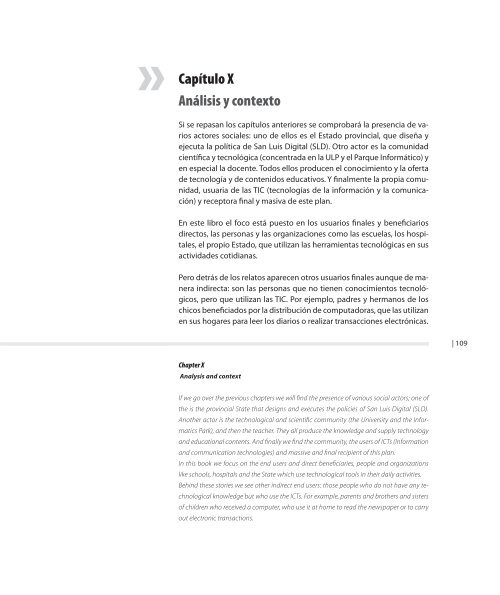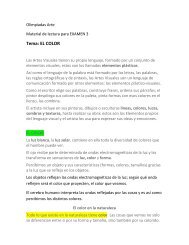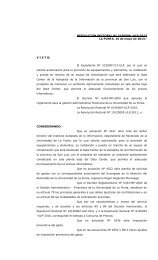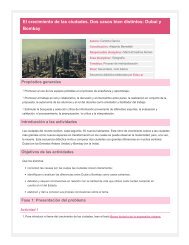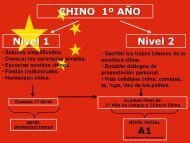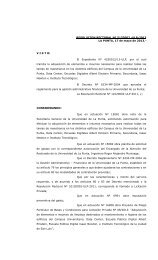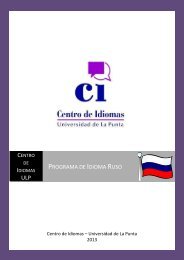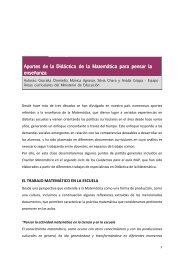e-Book PDF - Universidad de La Punta (ULP)
e-Book PDF - Universidad de La Punta (ULP)
e-Book PDF - Universidad de La Punta (ULP)
You also want an ePaper? Increase the reach of your titles
YUMPU automatically turns print PDFs into web optimized ePapers that Google loves.
»Capítulo XAnálisis y contextoSi se repasan los capítulos anteriores se comprobará la presencia <strong>de</strong> variosactores sociales: uno <strong>de</strong> ellos es el Estado provincial, que diseña yejecuta la política <strong>de</strong> San Luis Digital (SLD). Otro actor es la comunidadcientífica y tecnológica (concentrada en la <strong>ULP</strong> y el Parque Informático) yen especial la docente. Todos ellos producen el conocimiento y la oferta<strong>de</strong> tecnología y <strong>de</strong> contenidos educativos. Y finalmente la propia comunidad,usuaria <strong>de</strong> las TIC (tecnologías <strong>de</strong> la información y la comunicación)y receptora final y masiva <strong>de</strong> este plan.En este libro el foco está puesto en los usuarios finales y beneficiariosdirectos, las personas y las organizaciones como las escuelas, los hospitales,el propio Estado, que utilizan las herramientas tecnológicas en susactivida<strong>de</strong>s cotidianas.Pero <strong>de</strong>trás <strong>de</strong> los relatos aparecen otros usuarios finales aunque <strong>de</strong> maneraindirecta: son las personas que no tienen conocimientos tecnológicos,pero que utilizan las TIC. Por ejemplo, padres y hermanos <strong>de</strong> loschicos beneficiados por la distribución <strong>de</strong> computadoras, que las utilizanen sus hogares para leer los diarios o realizar transacciones electrónicas.| 109Chapter XAnalysis and contextIf we go over the previous chapters we will find the presence of various social actors; one ofthe is the provincial State that <strong>de</strong>signs and executes the policies of San Luis Digital (SLD).Another actor is the technological and scientific community (the University and the InformaticsPark), and then the teacher. They all produce the knowledge and supply technologyand educational contents. And finally we find the community, the users of ICTs (Informationand communication technologies) and massive and final recipient of this plan.In this book we focus on the end users and direct beneficiaries, people and organizationslike schools, hospitals and the State which use technological tools in their daily activities.Behind these stories we see other indirect end users: those people who do not have any technologicalknowledge but who use the ICTs. For example, parents and brothers and sistersof children who received a computer, who use it at home to read the newspaper or to carryout electronic transactions.


